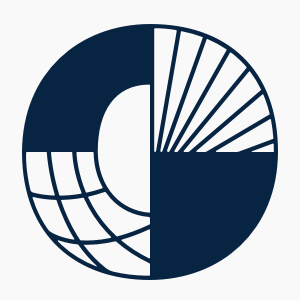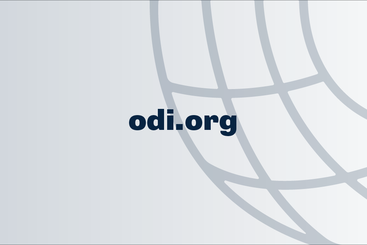The 2023 update of the World Health Organization Global Health Expenditure Database (GHED) was published last month.
Together with the preliminary results from 2022, it shows a reversal in the long-run de-prioritisation of spending on health by governments in sub-Saharan Africa. It also shows that our understanding of health spending for the region is incomplete.
The WHO currently compiles the most comprehensive and timely government spending data of all international organisations. Still, there remains room for improvement in the quality of expenditure data to inform global efforts to achieve universal health coverage (UHC). This should start with improving the way expenditure data is produced at the country level.
1. What the GHED tells us about government spending on health in sub-Saharan Africa
Weak incremental growth before the pandemic
Prior to most recent updates, the long-term trend in the Global Health Expenditure Database (GHED) presented a concerning picture. Figure 1 shows that government health expenditure in sub-Saharan Africa has been lagging behind other regions, and not catching up. While it had a similarly low level of government health spending per capita as South Asia in 2000, its growth rate has been half South Asia’s in the last two decades – 3% annually compared to 6%.
Sluggish growth in government health spending in the region has been a persistent concern, as it is perceived to be a significant obstacle to achieving Universal Health Coverage and the Sustainable Development Goal (SDG) for health (Barroy et al., 2018). For example, progress towards one of the SDG8 indicators – ‘the proportion of the population with large household expenditures on health as a share of total household expenditure or income’ – is closely linked to the growth in government health expenditure.
Reasons for sluggish growth
Several overlapping reasons explain this slow growth in government health expenditure across the region.
Tandon et al. (2020) show that higher government healthcare spending can be achieved in three ways. It can result from an increase in the overall size of the economy, the leading contributor in the long run. It can also be realised by expanding the relative size of government expenditure through collecting more in taxes. Lastly, higher government healthcare spending can be attained through increased budget prioritisation of the health sector, i.e. raising the share of the budget allocated to health.
These three drivers all account for the low growth in health spending in SSA. First, the combined effect of sluggish economic growth and limited improvement in revenue mobilisation in the last decade restricted growth in total government expenditure (OECD, 2023; IMF, 2023). Since 2010, most countries experienced a decline in their economic growth rates, and the median government revenue as a share of GDP increased by only 2.3 percentage points, remaining below 17% (WEO; GRD, UNU WIDER) (see Figure 2).
Growth in health expenditure was also hampered by a lack of political prioritisation. Figure 3 shows that, over the last two decades, health prioritisation remained stagnant, and half of the countries in the region allocated less than 7% of their budget to health. Almost all countries in the region have fallen short of the ambitious targets set in the Abuja Declaration of 2001, which aimed for a minimum allocation of 15% of the annual budget to the health sector by members of the African Union.
Boosting government health spending through greater budgetary prioritisation in the region is challenging due to the many competing priorities on budgets. Many African countries, still in their pre-demographic dividend phase and grappling with infrastructure deficits, face substantial pressure to allocate funds towards education and large capital projects. Additionally, the surge in debt stock and the shift towards Eurobonds have significantly escalated debt servicing costs, consuming a growing share of government budgets (IMF, 2023). The health sector, with expenditures primarily driven by operating costs related to drugs, medical supplies and equipment, is especially vulnerable to competing demands from other budgetary priorities.
Strong reprioritisation since the pandemic
Last month's update of the GHED extends the time series by one year to 2021, providing additional insights into government responses to the pandemic. The update confirms last year’s finding and shows that the increase in government health spending observed in 2020 was sustained in the second year of the pandemic.
In 2020, average general government health expenditure per capita for the region increased by 10%, the largest annual rise since recording began. Although there was a slight drop in health expenditure in 2021, down 2% on the 2020 level, driven by a decrease among upper-middle-income countries (UMICs), most countries maintained their overall gains into the second year of the pandemic. Figure 4 shows that, over this period, 78% of SSA countries (35) experienced a real increase in per capita general government health expenditure, with nearly a third seeing an increase exceeding 25%. In 32 SSA countries (71%) there was a reprioritisation towards health spending.
Following the framework of Tandon et al. (2020), Figure 5 breaks down the growth in government expenditure on health into (1) growth in GDP; (2) growth in government expenditure as a share of GDP; and (3) growth in health expenditure as a share of government expenditure.
The growth decomposition for 2020 (the first year of the pandemic) shows some variation across income levels in how governments achieved the increase in health spending. In low-income countries (LICs) and UMICs, the increase in health spending was more a result of expansionary fiscal policies, while in low- and middle-income countries (LMICs) it was primarily driven by reprioritisation. For 2021 these gains were broadly sustained in LICs and LMICs. However, health spending in UMICs declined as several countries began fiscal consolidations.
2. What the GHED data doesn’t tell us
Analysis of health spending trends, as illustrated above, is made possible thanks to the substantial annual data collection exercise conducted by the WHO since 2000. The scale and ambition of this exercise remain unmatched by other international organisations. However, while the GHED offers valuable insights on global trends, our understanding is nevertheless limited due to issues around timeliness, completeness and the quality of the data.
Time lags limit our understanding of the latest developments
The most obvious limitation is the time lag in the release of data. The analysis provided above is already almost two years out of date. Since then, governments in the region have been experiencing a fiscal squeeze and engaging in fiscal consolidation. The potential impact of this tightening on the health sector is a cause for concern.
Since 2022, the WHO has tried to release data with a one-year lag. However, so far that data has mostly been for high-income countries (HICs) and UMICs. Updates of the GHED rely on National Health Accounts (NHA) data submitted by member countries through standardised templates via the Health Accounts Production Tool. NHAs, which follow common accounting standards set by the 2011 System of Health Accounts, are particularly well-suited for tracking long-term trends in health spending across countries. However, they are technically challenging to compile, resource-intensive and seldom harmonised with countries’ own budgeting and accounting classifications.
Consequently, in lower-income countries NHAs are rarely conducted consistently and are often subject to significant delays. Since 2010, the vast majority of sub-Saharan African countries have conducted at least one NHA (WHO, 2023b). But this is rarely done on an annual basis. NHA data for 2021 was provided by just 13% of sub-Saharan African countries (WHO, 2023b).
Quality issues raise more questions than answers
In the absence of NHAs, the GHED has to rely on alternative sources of data, but little information is provided on the source of these data points, or their estimation methods.
For instance, it is often unclear whether data points correspond to budgeted or actual expenditures. This ambiguity poses an interpretation challenge for SSA countries, where variations between budgeted and actual spending are common.
Efforts to extend and complement the GHED series using other data sources have highlighted discrepancies between them. For example, Piatti-Fünfkirchen et al. (2018) find substantial discrepancies for at least four of nine sub-Saharan African countries between the GHED and data from public expenditure reviews (PERs).
Incompleteness further limits our understanding
There are also gaps in the completeness of the data. While notionally covering general government expenditures, it is often unclear whether spending by subnational governments and special funds is captured (Piatti-Fünfkirchen et al., 2018). The former can constitute a substantial portion of primary health care spending in federal or quasi-federal sub-Saharan countries. Furthermore, while significant progress has been made in this last update, data on capital expenditures in SSA from the Global Health Expenditure Database (GHED) remains incomplete, limiting our understanding of the investments governments in the region are making in their health systems.
Despite these issues the GHED remains the best source of data on government spending across countries. The UNESCO Institute for Statistics (UIS) data on education expenditure, for instance, remains sparse, with less than half of countries globally having an estimate for government spending on education for 2020, and less than a third for 2021. Similarly, the IMF’s Government Finance Statistics database has data for less than half of sub-Saharan countries for 2021, and less than 60% for 2020.
3. Improving our understanding
In a context where governments across the region face heightened pressure to address the aftermath of the pandemic, uncertain external financing and a changing burden of disease, the ability to monitor health expenditures effectively and swiftly is more crucial than ever. Adequately tracking the volume and composition of resources provided to the health sector is critical for the donor community to mobilise and prioritise funds effectively to support governments making progress towards UHC. It also serves as a valuable tool to advocate for governments to strengthen their health systems in preparation for evolving health demands and future pandemic preparedness.
Improving the completeness, frequency and quality of the data in the GHED raises questions for financial management reforms, including:
- How to increase the coverage of financial reporting
General government financial reporting is not common in lower-income countries, but with internet coverage, software options and digital literacy all improving it is becoming more feasible. For example, Tanzania has extended coverage of its financial management systems from central government to local government and health facilities. There are benefits to doing this beyond financial reporting, particularly if the flow of funds for service delivery is influenced by the information shared to higher levels of government.
Having a harmonised chart of accounts is critical to improving the coverage of financial reporting. However, the latest data shows that just 14 of 48 SSA countries have a harmonised chart of accounts between the national and subnational level.
- How to increase the timeliness of financial reporting
It is impossible to complete an NHA exercise until financial reporting at the country level is available. Again, this tends to be an area where SSA governments fail to meet generally accepted good practice. PEFA indicators show that SSA countries struggle to reconcile accounts and complete budget execution and financial reports in a timely manner. And these accounting and reporting indicators only cover central budgetary operations.
Better digital tools could support improvements in this area, but other skills (i.e. in accounting, booking etc.) are also required across the levels of government. More fundamentally, institutionalised accountability is required to drive and sustain these reforms: policy-makers, parliamentarians and civil society need to find this reporting useful and advocate for its timely production.
- Whether and how to improve the harmonisation of financial reporting at the country level with international standards
Another reason for the time lag relates to the administrative burden of mapping country-level financial reporting data to the NHA template. Making this easier largely depends on the extent to which country-level budget and accounting classifications (the chart of accounts) are mapped to international standards. If this is done, the more productive things like the Health Accounts Production Tool will become.
If a country is implementing programme-based budgeting, then it should be relatively easy to ensure that the programme budget structure is mapped to the international standard. This reform thus offers opportunities for such alignment with international standards.
- How to increase the transparency of the GHED
Most of these reforms need to happen at the country level, but there are also things the WHO can do to make it easier to use and extend the series using other sources of data. While it might not be feasible to provide detailed metadata on the hundreds of indicators collected, more clarity could be offered regarding important indicators such as government health expenditures. The WHO is doing a better job than anybody else to ensure we have comparative cross-country data on spending, but it could still do better.




